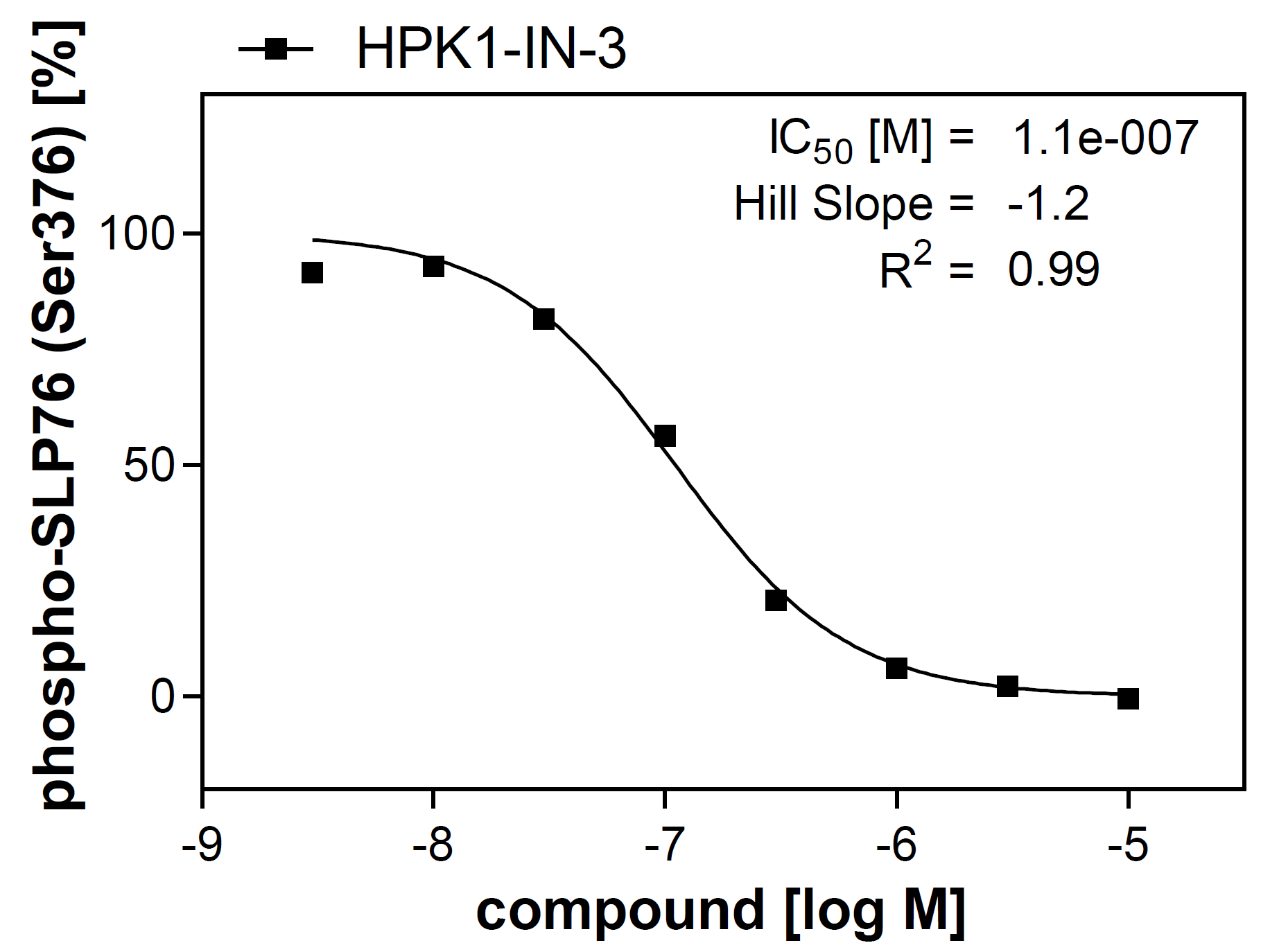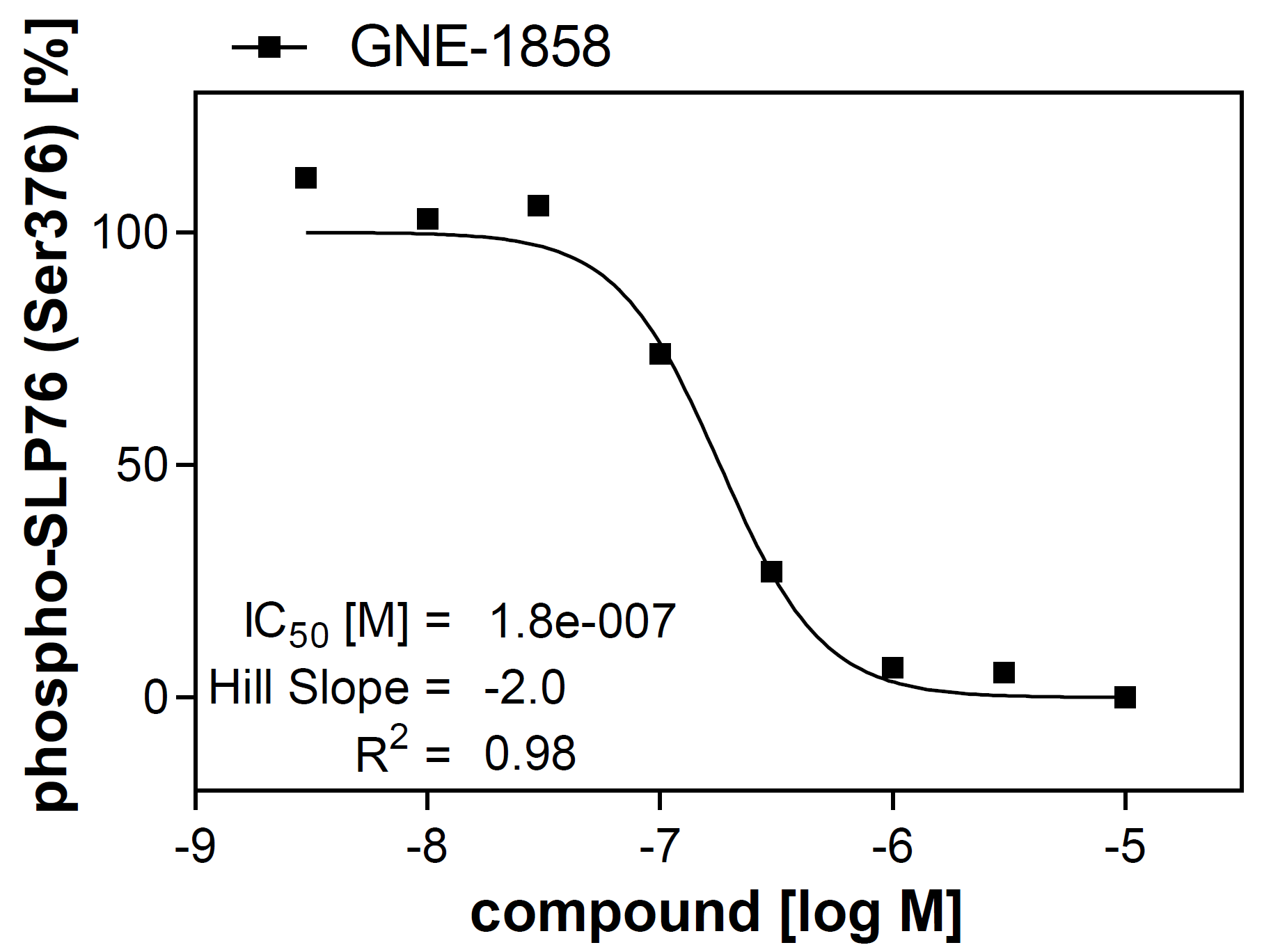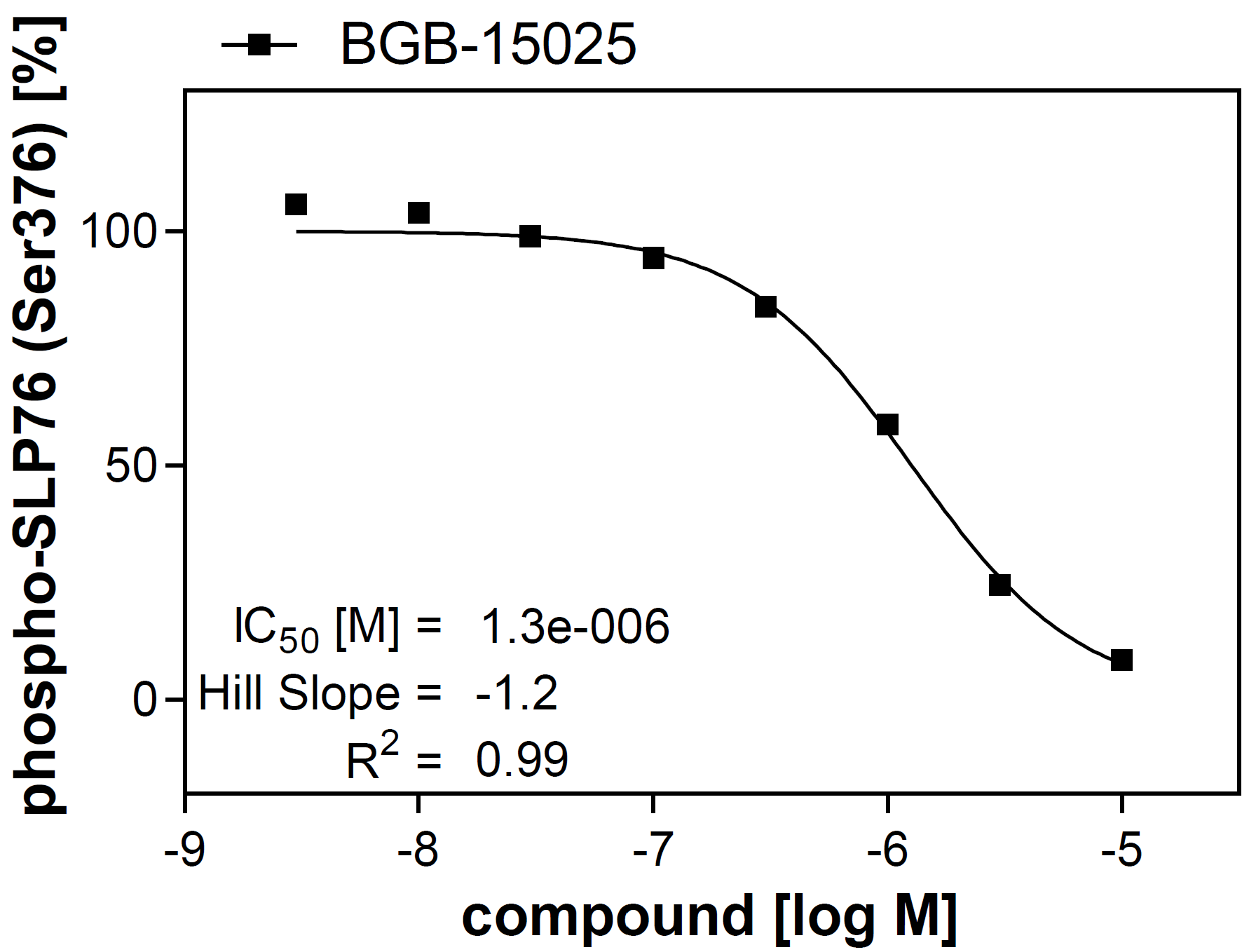HPK1 Cellular Phosphorylation Assay (intracellular kinase activity assay) for compound screening and profiling in intact cells
HPK1 (Hematopoietic Progenitor Kinase 1) is a serine/threonine-protein kinase also known as Mitogen-activated protein kinase kinase kinase kinase 1. The protein has been shown to play a role in JNK activation and acts upstream of the JUN N-terminal pathway. HPK1 may play a role in environmental stress response and hematopoietic lineage decisions and may enhance CD3-triggered activation of T‑cells and subsequent IL2 production.
MAP4K1 (HGNC: 6863)
MAP4K1; MEKKK 1
Jurkat
Endogenous
In the cellular HPK1 phosphorylation assay the human T cell leukemia cell line Jurkat is used, which expresses the T-cell receptor complex including co-receptor CD3 and co-stimulatory receptor CD28. Stimulation of these cells with a CD3/CD28 antibody complex results in activation of T-cell receptor signaling, which in turn leads to HPK1 activation. Inhibition of HPK1 results in reduced phosphorylation of its target SLP76 at Ser376. Quantification of SLP76 phosphorylation is assessed via sandwich-ELISA using a SLP76 specific capture antibody and an anti-phospho SLP76 (Ser376) detection antibody. The assay is validated based on known inhibitors of HPK1 activity (see Fig. 1)
Phosphorylation at residue Ser376 of SLP76 as a readout of intracellular HPK1 kinase activity via sandwich-ELISA.
Freiburg, Germany
More information can be found on our website Cellular Phosphorylation Assay Services.
Reference compound IC50 for HPK1



The well-described inhibitors HPK1-IN-3, GNE-1858 and BGB-15025 potently inhibit HPK1 activity in the cellular phosphorylation assay. All compounds were included in the validation process and the cellular HPK1 assay generated highly reproducible IC50 values. The graphs show representative results.